- Home
- Rosamunde Pilcher
The World of Rosamunde Pilcher Page 2
The World of Rosamunde Pilcher Read online
Page 2
Helen Scott was from Scotland and enjoyed the southern, almost Mediterranean atmosphere of Cornwall. She made many friends among painters and authors who had come to live there and was a member of the Arts Club of St Ives. There was plenty of opportunity to encourage her children’s artistic talents. Rosamunde Pilcher remembers: “We were always making something, painting or working on a play.”
Rosamunde (second left) together with her sister Lalage (second right) and two friends on the beach of St Ives. “Cornwall was like paradise for us children,” remarks Rosamunde Pilcher. “There was so much to do: picnics, beach parties, excursions – there was no room for boredom.”
1930: Rosamunde (right) and Lalage at St Michael’s Mount, Mount’s Bay. Penzance.
Rosamunde Pilcher was born on 22 September 1924 in Lelant, a small village on the north coast of Cornwall.
“The Elms”, the house in which Rosamunde Pilcher spent her childhood. The huge garden was ideal for playing, dreaming and forgetting everything around you. The ideal environment for a future author: Rosamunde Pilcher was only fifteen when she wrote her first short story.
1939: During the Second World War Commander Scott was relocated to Wales. Rosamunde found it difficult to leave Cornwall, but she liked her new school in Llandaff. “We learned a lot about art and music and were taught choral singing.”
1940: Once she had left school Rosamunde Pilcher took a secretarial course in a secretarial college that had been relocated to Gloucestershire during the war, learning typing and shorthand. She enjoyed long bicycle tours through the romantic countryside of the Cotswolds and you will find traces of her memories in her novel The Shell Seekers.
Many of the strategically important departments of the Foreign Office were located in Woburn Abbey, Bedfordshire, during the war. Rosamunde Pilcher only worked here for a few months: “I was bored to tears, the work was very administrative and everything had to be kept top secret. One day I simply could not take it any longer. I took some holiday leave, left for Portsmouth and enlisted in the Navy.”
Three ladies of the Women’s Royal Naval Service to which Rosamunde Pilcher belonged. After two years at HMS Excellent in Portsmouth she was sent to Ceylon. This is where she submitted a short story to Woman and Home and she received fifteen guineas for its publication in the summer of 1945.
The recruits of the Women’s Royal Naval Service had to do mainly secretarial and supply duties, but some girls were qualified in ordnance and learned to handle weapons.
St Ives in 1946: Many young people returned from the war. People celebrated being reunited with friends who had been lost during the long years of the war. During one of these numerous parties Rosamunde Scott met the young Scottish officer, Graham Pilcher, who was staying with relatives while recovering from severe war injuries
Cornwall also has memories for Graham Pilcher. His grandmother Florence (second right), and her second husband, Thomas Millie Dow (right), lived at Talland House, St Ives, and Graham spent many childhood holidays there. Florence and Tom Dow had met when they were young, and both living in Scotland, but Florence had not been allowed to marry the struggling painter.
Florence was sent to India in 1882, so that she would forget about the unsuitable romance with the young painter. In India, she met and married a Colonial Officer, Robert Pilcher (right). Robert Pilcher died of repetitive fever shortly after the birth of their second child, a little boy called Hope. Florence left Burma and returned to Scotland with Elsie and Hope, and there met again Tom Dow, who had stayed constant for seventeen years. Married, they lived for a while in Italy, and then moved to Cornwall, as did many artists at the turn of the century
Rosamunde and Graham Pilcher were married in December 1946 in Lelant. Shortly after, they moved to Dundee where Graham was a director of Jute Industries, the family firm. But the connection to Cornwall is still flourishing in the next generation: Rosamunde Pilcher’s youngest son Mark is now living at Zennor near St Ives.
Talland House in St Ives, the home of Florence and Tom Dow. Talland was once the home of Virginia Woolf’s family. In the foreground is Pietro, the servant the Dows brought back with them from Italy
GODREVY POINT ON THE NORTH COAST OF CORNWALL
MEVAGISSEY HARBOUR ON THE SOUTH COAST
She came upon flights of stone steps and unsuspected alleys and followed them down until all at once she turned a corner out at the very edge of the harbour. In a dazzle of sunshine she saw the bright-painted boats, the peacock-green water. Gulls screamed and wheeled overhead, their great wings like white sails against the blue, and everywhere there was activity and bustle.
THE EMPTY HOUSE
THE SLOOP INN – ST IVES – ROSAMUNDE PILCHER BASED THE ‘SLIDING TACKLE’ ON THIS PUB
Over the years the Sliding Tackle had remained, stubbornly, itself. Set in the old and unfashionable part of Porthkerris, slap on the harbour, with no space for chi-chi terraces or tea gardens, it had managed to resist the spate of summer tourism which engulfed the rest of the town.
ANOTHER VIEW
It was a secret house and, as well, a house that seemed to slumber in the past. Life here, it was clear, had never been anything but quiet and leisurely, lived at a snail’s pace; and like a very old and erratic clock, or perhaps a very old and erratic person, it had lost all sense of time. This gentle influence was very strong.
THE SHELL SEEKERS
COTTAGE NEAR CADGWITH
CROQUET MALLETS LINED UP IN THE HALL, READY FOR A GAME, WHEN IT STOPS RAINING
Slowly they inspected the house, going from room to room, and Tom’s natural interest grew to a sort of amazed admiration, for Kitty had somehow managed to see in a derelict cottage the possibilities of creating a house that was unique. Every room had its charming, unexpected feature.
FLOWERS IN THE RAIN
LOVING DETAILS AND BEAUTIFUL MATERIALS CREATE THE CHARMING ATMOSPHERE OF SPARINGLY DECORATED COTTAGES
TYPICAL COTTAGE KITCHEN INCLUDING THE AGA
THE TRADITIONAL ENGLISH AFTERNOON TEA INCLUDES SANDWICHES AND CAKES. A “CREAM TEA” CONSISTS OF SCONES, CREAM AND JAM
She found a cloth and laid the tea, setting out cakes and biscuits, sugar bowl and silver milk jug. Even for kitchen tea, it appeared, her standards were meticulous.
THE DAY OF THE STORM
TEACAKES FROM ROSAMUNDE PILCHER’S RECIPE BOOK
SCONES
The lightest scones are made from plain flour and a quick acting raising agent (bicarbonate of soda and cream of tartar).
Makes 9–12 scones:
8 oz plain flour
1/2 level teaspoon salt
1 level teaspoon bicarbonate of soda
2 level teaspoons cream of tartar
1 1/2 oz butter
1 1/2 oz castor sugar
1 egg made up to 1/4 pint with the milk (measure if possible, otherwise add approximately 4 tablespoons)
Into a large mixing basin sift together the flour, salt, bicarbonate of soda and cream of tartar. Rub in the butter and stir in the sugar. Lightly mix the egg and milk and pour all at once into the centre of the dry ingredients.
Using the blade of a knife, or a fork, mix quickly to a dough. It should be soft but not sticky. Turn out on to a lightly floured working surface and pat or roll out to a thickness no less than 1/2 inch – never roll scone dough too thinly. Cut into squares with a floured sharp knife. Or stamp out rounds with a 2-inch cutter, flouring the cutter each time you use it. You should get about 9–12 scones, depending on the thickness of the dough – use up all the trimmings.
Place scones not too closely on a floured baking tray and sprinkle with extra flour. Place near the top of a hot oven (Gas Mark 7/220°C/425°F) and bake for 10 minutes or until risen and brown. The sides should feel springy when pressed.
TREACLE TART (SYRUP TART)
Rich short pastry:
1/2 lb. flour
6 oz. butter
1 egg yolk
1/2 teaspoon castor sugar
1 teaspoon lemon juice
Filling: 1 lb. jar golden syrup
1/2 pint soft breadcrumbs
3 teaspoons lemon juice
Sift the flour with the sugar, rub in the butter and bind with the beaten egg yolk. Add the lemon juice and about 3 tablespoons of iced water. Roll out to 1/4 in. thickness and line a 12 in. flan tin.
Heat the syrup until runny in a small pan or double boiler. Stir in breadcrumbs until a good thick consistency is reached. Sharpen flavour with lemon juice. Pour the filling into the pastry base and bake for 30 minutes at Gas Mark 4/180°C/350°F. Serve with a large bowl of lightly whipped or clotted cream. Serves 10–12.
MARK PILCHER’S CARAMEL CAKE
1/2 lb of plain chocolate
2 oz butter
2 teaspoons syrup 1 small tin of condensed milk
Warm up, melt and mix ingredients together. Mix in 1/2 lb of crushed, dry biscuits. Pour mixture on a greased baking tray. Let mixture cool down.
It was a secret house, tricky to locate, buried deep in a remote and inaccessible corner of the country that had not changed, either its ways or its appearance, for centuries. From the road it was invisible, protected from all eyes by woods and a rutted driveway, bordered by high banks of hydrangea. In front of the house, the garden, half-wild and half-cultivated, sloped in a series of lawns and terraces down to the shores of a winding, wooded tidal creek.
THE SHELL SEEKERS
And she remembered coming for the first time, in Diana’s Bentley, and seeing the house and the gardens and the distant sea, and being instantly captivated, falling in love. And she knew that she would come back, but knew too that Nancherrow as she had known it would never, ever, be quite the same again.
COMING HOME
COUNTRY HOUSE NEAR FOWEY ON THE SOUTH COAST OF CORNWALL
SUMMER IN A GARDEN NEAR GERMOE
FIVE HUNDRED YEARS AFTER THE WAR OF THE ROSES RED (JAMES MASON) IS BLOSSOMING PEACEFULLY NEXT TO WHITE (ALBA CELESTIAL)
SECLUDED BY HIGH WALLS YOU WILL DISCOVER CORNWALL’S MAGIC GARDENS
THE ROSE WHOSE SCENT FILLS A WHOLE WORLD: ROSA MUNDI
YOU WILL FIND BOTH CULTIVATED AND WILD FLOWERS IN THE GARDENS OF CORNWALL
Following Loveday, stepping out of doors through the French windows of the drawing-room, Judith was dazzled by light. The garden was drowned in it; by a glare that the noonday sun drew and reflected from the sea, so that everything shimmered, flickered, shifted in the summer breeze. The restless leaves of the eucalyptus shivered and turned, silver and green; deep-pink petals, dropping from an overblown rose, were chased across the lawn….
COMING HOME
ROSAMUNDE PILCHER AND THE SEA - A PASSION THAT STARTED IN HER CHILDHOOD
At this point the coast seemed to fling itself out into a jagged headland, composed of great granite outcrops. Between these the turf was smooth and very green, stained with patches of purple-belled heather, and the path wound down between these outcrops and as they followed its convolutions, a little cove, sheltered and enclosed, gradually revealed itself, far below.
THE EMPTY HOUSE
And Gus looked, and saw the dark-turquoise sea, the scrap of beach, and the mammoth breakers hurling themselves against the rocks at the foot of the cliffs. Surf sizzled like soapy foam and spray, in rainbow-shot explosions of water, sprang twenty feet or more into the air. It was all very invigorating and very spectacular.
COMING HOME
LAND’S END (THE FURTHEST WESTERN PART OF CORNWALL)
SAILING BOATS IN THE FOG NEAR ST MICHAEL’S MOUNT
And Eliot said that if I stayed in Cornwall, he would borrow a boat and teach me to sail; we would go mackerel fishing from Porthkerris – in the summer he would show me all the tiny coves and secret places which the tourists never found.
THE DAY OF THE STORM
THE CLIFFS AT LAND’S END
NORMAN GARSTIN “THE RAIN IT RAINETH EVERY DAY” (1889)
It was during her pregnancy that they first travelled to Cornwall. They ended up in Porthkerris, which had already been discovered by painters from all over the country, and where many of Lawrence’s contemporaries had settled. The first thing they did was to rent the net loft that was to become his studio, and here, for two long winter months, they lived, camping in fearful discomfort and total happiness. Then Cam Cottage came on the market, and Lawrence, with a good commission under his belt, put in an offer and bought the place. Penelope was born at Carn Cottage and they spent every summer there.
THE SHELL SEEKERS
LAURA KNIGHT “AT THE EDGE OF THE CLIFF” (CIRCA 1915)
“Laura Knight. What a particular beauty that is.”
“And unusual. I always associate her with circuses.”
“That was done at Porthcurno.”
THE SHELL SEEKERS
She had paused, turned away from him, as though reluctant to leave the cliffs and the gulls and the tempestuous sea, and return to reality. And in that moment, Gus saw, not Loveday, but the Laura Knight girl, the picture that he had stealthily removed, so long ago, from the pages of The Studio. Even her clothes, the worn tennis shoes, the striped cotton skirt, the aged cricket sweater (rather charmingly stained with raspberry juice) were the same. Only the hair was different. No russet plait lying like a heavy rope over one shoulder. Instead Loveday’s chrysanthemum mop of dark, shining curls, ruffled by the wind.
COMING HOME
JOHN LAMORNA BIRCH, “THE SERPENTINE QUARRY NEAR MULLION, CORNWALL” (CIRCA 1920)
LOUIS GRIER, “SEASCAPE” (CIRCA 1910)
NORMAN GARSTIN, “VIEW OF MOUNTS BAY FROM NEWLYN HARBOUR” (1893)
“Well, then he came back for good. And built the studio. That was when he was painting at his best. Lovely stuff he did then, great seascapes, so cold and bright you could smell the wind, feel the salt on your lips.”
THE DAY OF THE STORM
THOMAS MILLIE DOW, “TULIPS” (CIRCA 1910)
JOHN LAMORNA BIRCH, “THE COTTAGE GARDEN” (DETAIL, 1897)
“To form a nucleus of a rare collection, we all donated a favourite work. See.” He leaned back, and used his stick as a pointer. “Stanhope Forbes.” His stick moved on. “Lamorna Birch. Munnings. Montague Dawson. Thomas Millie Dow. Russell Flint …”
THE SHELL SEEKERS
PETER WARD, “ST IVES ELEMENTS NO 8” (1984)
“Because, one day, they will come. As we came. Young men with bright visions and deep perceptions and tremendous talent. They will come, not to paint the bay and the sea and the boats and the moors, but the warmth of the sun and the colour of the wind. A whole new concept. Such stimulation. Such vitality. Marvellous.”
THE SHELL SEEKERS
VIEW FROM HAYLE TOWANS OF GODREVY LIGHTHOUSE
She gazed at the sea, trying to decide how, if she were Papa, she would endeavour to paint it. For, although it was blue, it was a blue made up of a thousand different hues. Over sand, shallow and translucent, it was jade-green, streaked with aquamarine. Over rocks and seaweed, it darkened to indigo. Far out, where a small fishing boat bucketed its way across the waves, it became a deep Prussian blue. There was little wind, but the ocean lived and breathed; swelled in from distant depths, formed waves. The sunlight, shining through these as they curved to break, transformed them to moving sculptures of green glass. And, finally, all was drowned in light, that unique suffused brilliance that had first brought the painters to Cornwall, and had driven the French Impressionists into a passion of creativity.
THE SHELL SEEKERS
GODREVY POINT: NORTH COAST
BOATS IN PORTHMEOR BAY
BUDE BAY ON THE NORTH COAST OF CORNWALL
ST IVES, CALLED “PORTHKERRIS” IN ROSAMUNDE PILCHER’S NOVELS
Beyond Mr Williams, a great picture-window framed, like some lovely painting, the whole jumbled, charming panorama of the old part of the town. Roofs of houses, faded slate and white-washed chimneys, tumbled without pattern or order down the hill. Beyond the roofs and far below them was the harbour,
at full tide and sparkling with sunshine. The air was clamorous with the sound of gulls, the sky patterned with their great gliding wings and as Virginia stood there, the church bells from the Norman tower struck up a simple carillon.
THE EMPTY HOUSE
VIEW OF ST IVES

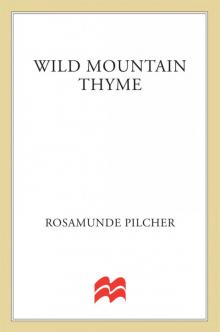 Wild Mountain Thyme
Wild Mountain Thyme Sleeping Tiger
Sleeping Tiger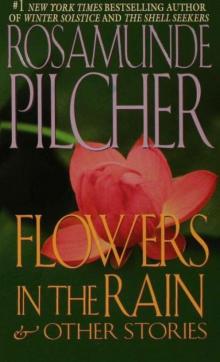 Flowers in the Rain & Other Stories
Flowers in the Rain & Other Stories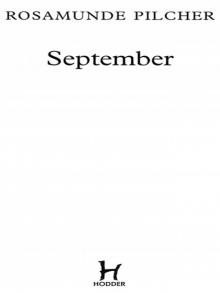 September
September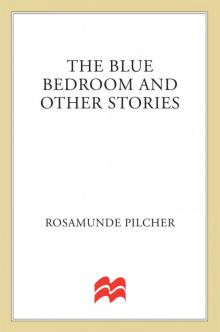 The Blue Bedroom: & Other Stories
The Blue Bedroom: & Other Stories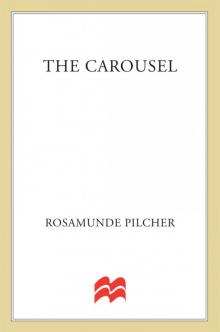 The Carousel
The Carousel The End of Summer
The End of Summer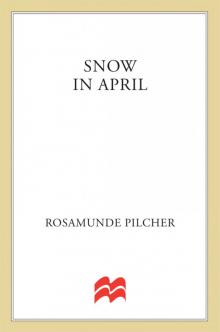 Snow in April
Snow in April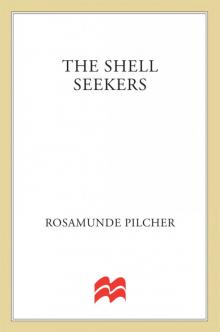 The Shell Seekers
The Shell Seekers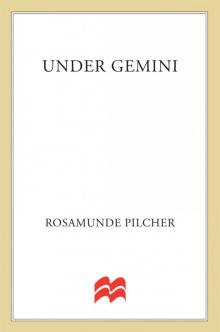 Under Gemini
Under Gemini The Empty House
The Empty House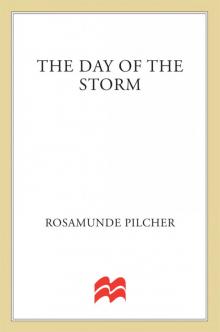 The Day of the Storm
The Day of the Storm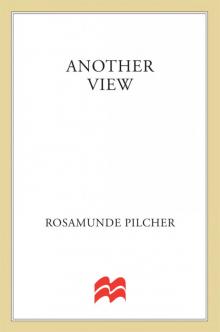 Another View
Another View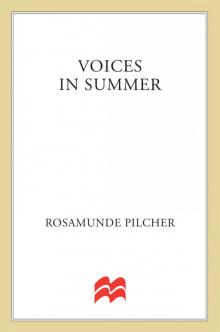 Voices in the Summer
Voices in the Summer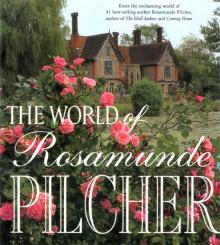 The World of Rosamunde Pilcher
The World of Rosamunde Pilcher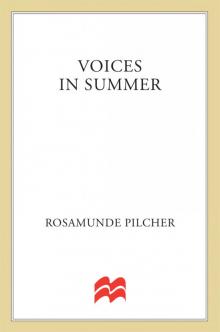 Voices In Summer
Voices In Summer Blue Bedroom and Other Stories
Blue Bedroom and Other Stories